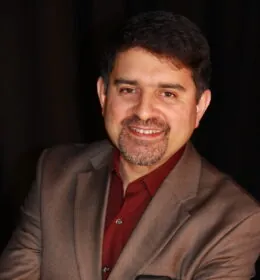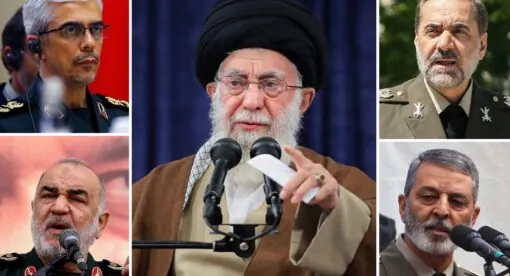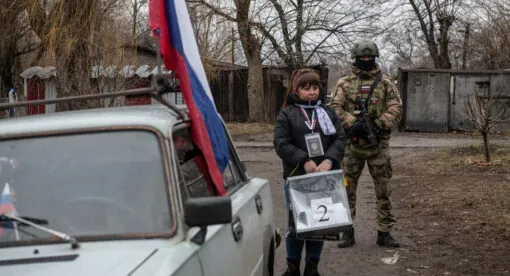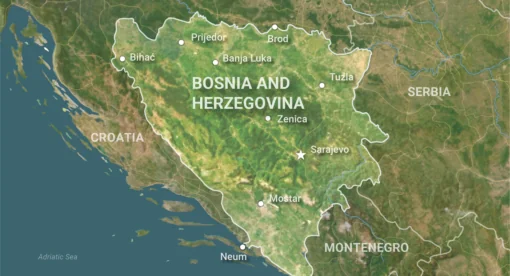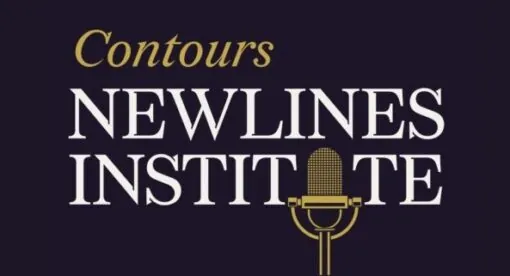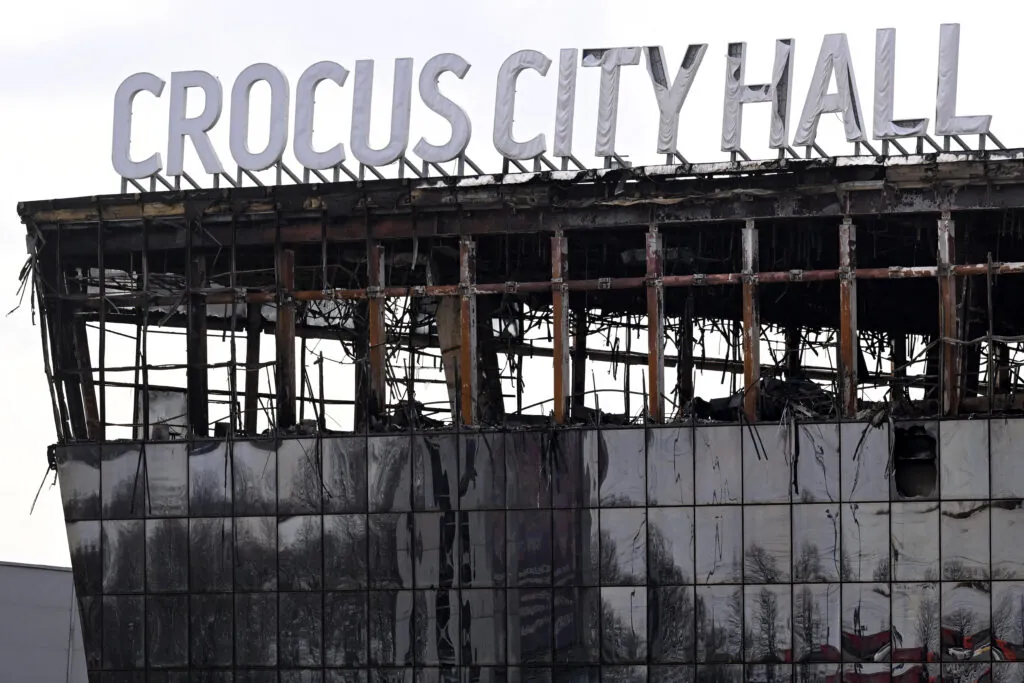
In this episode of Eurasian Connectivity, host Kamran Bokhari sits down with New Lines Senior Director Nick Heras. Together, they dive into how a spate of international attacks may signal a resurgence of the Islamic State, the group’s refocus to Central Asia, and how the global community could react.
Kamran Bokhari:
Hello, everyone, this is Kamran Bokhari with another episode of Eurasian Connectivity. Today, I have my colleague, Nick Heras, who is the Senior Director for Strategy and Programs here at the New Lines Institute. Nick has spent a great deal of time looking at international terrorism, and I thought that’d be great to have a conversation between the two of us from a perspective that is often ignored in our space. When we look at terrorism, when we look at an ISIS attack, it’s seen from the lens of counterterrorism. And I want to broaden the conversation here, because we need to contextualize this ISIS attack that took place in Moscow, targeting a concert hall, and killing nearly 140 people, and wounding several hundred others. We know that ISIS has claimed responsibility for it, we know that Russian authorities have apprehended four citizens of Tajikistan who are allegedly behind the attack, or are the shooters, who essentially shot their way through the facility where this concert was taking place, and then they were caught reportedly trying to escape through Ukraine.
So what I want to do here today with Nick is to sort of say, okay, the context for this attack is obviously, ISIS is on a resurgence. That’s one trend, because we saw ISIS stage and attack in Iran on the tomb of Qasem Soleimani, the former head of the IRGCQF. This was back in January, and there’ve been other reported ISIS activity. But in the case of Russia, this comes right in the middle of a war that Russia has been waging against Ukraine since early 2022. We’re two years out from that, and we tend to have this conversation about terrorism separate from great power competition and the broader geopolitical strategic environment in which the world operates.
What I want to do is bring it together and say, let us look at this geopolitically, and what does this tell us about how ISIS is trying to insert itself into pre-existing conflicts? And that way, try to make sense of it, as opposed to just sort of looking at it, hey, there’s a war going on, but then there’s ISIS, and those two conversations get separated out. So I’m going to pass the mic to Nick, and hi, Nick, thanks for doing this. So would love to get your thoughts on this.
Nick Heras:
Well, hello, Kamran, and thank you, and I’m excited to be here with you for your excellent podcast series, as well as you are, if I will, one of the OGs of Eurasian studies. And you continue to do outstanding work, you’ve done a lot of great work across the aisle with all sorts of policymakers, and there’s a lot of exciting stuff that you’re doing. I want to start by saying that when I look at ISIS and the Khorasan Province, I immediately begin to think about, okay, what is running in the head of its leader, Sanaullah Ghafari?
And I think Sanaullah Ghafari being someone who’s just about to hit his 30’s, as far as we know, someone who sort of represents what is trying to be this sort of vigorous, world-beater movement, as you put it, I think so brilliantly, how it as a non-state actor with state-like pretensions tries to find a niche for itself to grow, if you will, in those sort of places in between, in Central Asia and South Asia, and across that sort of Eurasian space, is going to be an important dynamic for us to follow for years to come.
When I think of ISIS Khorasan Province, I believe that it really is in the stage where it understands implicitly that it has to essentially dance around sort of three elephants in Eurasia. The first, of course, being Russia, the second, of course, being China, and the third, if you will, being Pakistan and India. And I conclude those two countries as sort of a combo because I think on this particular issue, when it comes to ISIS, Khorasan Province, there’s a commonality of interests. And of course, there’s obviously, although not an elephant, it’s an important act in the Taliban and Afghanistan.
What we see when we see ISIS Khorasan Province is an organization that probably doesn’t have that many operatives, and some of the best info we have is that it might have, at best, 2,500, maybe 3,000, if you will, actual sort of rank and file fighters, and that it’s dependent a lot on a sort of transnational, or translocal, if you prefer, sort of scattered network of disempowered people who are spread across many areas of Eurasia, particularly in areas that are historically Turkic in background, which includes areas of Russia, as well, who are dispossessed, who are frustrated.
And rather than focusing on the far enemy of the United States, if you will, which has traditionally been the target for Salafi jihadi strategy since the late 1990s, since the 1990s, the more present targets and apostate actors from their point of view, Russia, and other states. So I look at it from that point of view, and I look at this entire Eurasian space as a area of growth for ISIS Khorasan Province, because the actors that seek to dominate that space, as you put it so rightly, are distracted. Russia, of course, is distracted with its conflict in Ukraine, China has so many different global and regional interests. And so, there are opportunities for ISIS Khorasan Province to build a transnational, translocal network, and we’ve seen from the arrests that have happened recently in Turkey related to potential ISIS Khorasan Province operatives, that there’s a lot of work left to do from the international community to prevent this organization from bursting even more onto the scene.
Kamran Bokhari:
Thank you for setting the stage for this conversation, and that’s an excellent framing. So it seems like, from what you’re telling me, and I’m referring back to your remark about having a large pool, a relatively large pool of operatives of central Asian origin, and that gives them the ability to conduct strikes as for out as Russia. Although I’ve been wondering, yes, you have these four Tajikistani citizens who’ve been accused of being behind the attack in Moscow, and I should also mention that there is a video that ISIS has circulated that claims these four individuals as their own operatives.
So it’s interesting how ISKP, the Islamic State in the Khorasan Province, headquartered in Afghanistan, or along the border between Afghanistan and Pakistan, is able to project firepower that far out. You would think that the ISIS operatives in the North Caucasus, in the areas like Chechnya, Dagestan, and Ingushetia, would probably be better placed to conduct such strikes. So this is a lot of capability that ISIS is demonstrating, sitting or headquartered in the Af-Pak region, and then using Tajikistani citizens who are expat workers in Russia to conduct this kind of an attack. So there’s a lot of tradecraft that’s going into this, would love to get your thoughts on that.
Nick Heras:
Well, I think you’ve laid it out very well, Kamran, in that, these attacks that ISIS Khorasan Province have conducted are far. They’re far away from what we understand to be the center of gravity, if you will, such as it exists for that organization and these Afghani-Pakistani border regions. And that type of … We know that Sanaullah Ghafari’s modus operandi, if you will, to increase recruitment, to increase inspiring of impressionable, potential members of the organization, is to try to conduct attacks, from their point of view, of a spectacular nature.
And to your point, if you look at just sort of the stages of development for Salafi jihadi organizations, there has been a sort of real change. And we’ve seen this occur as pressure, if you will, the pressure of the United States and its allies, over the course of the 2000s and 2010s, into the present day, on international Salafi jihadi organizations, has kind of led to a model where most Salafi jihadi organizations, and this includes the ISIS branch in Africa, the different ISIS branches in Africa, but particularly, in the trans-Sahara Sahel space, which we’ve done a lot of great work on here at the New Lines Institute, as well, try to take really, a local approach. Al-Qaeda has done this in Syria, as an example. Al-Shabaab has done this in the Horn of Africa. ISIS has done this, Al-Qaeda has done this in the trans-Sahara.
You embed locally, you marry locally, you become a part of the local sociopolitical and sociocultural fabric, and over time, you kind of become a part of the local framework of society in such a way that’s very difficult for you to be uprooted. And in particular, in Africa, and we saw over time, the Taliban and Al-Qaeda tried to do this, as well, historically, in Afghanistan and Pakistan. ISIS Khorasan Province hasn’t had that same level of success in its home turf, if you will, in Afghanistan and Pakistan. It’s survived, but it really hasn’t, if you will, thrived. So instead, it seems that Sanaullah Ghafari has just taken another approach, which is, he has to have a type of management of savagery. He has to locally continue to conduct attacks to undermine Taliban rule in Afghanistan and where possible to weaken Pakistani authority in the areas of Pakistan where ISIS Khorasan Province tries to recruit and build its network.
But from a growth perspective, they seem to have identified the leadership of ISIS Khorasan province, that this entire Eurasian zone is liable to fall into potential disorder, and that, if they can expand the different ink spots, if you will, going back to another strategy that we’ve been introduced to in our engagements with U.S. military, the idea that you have Salafi jihadi groups, that formula of ink spots, you try to clear up those ink spots on the map, I think that Sanaullah Ghafari and his colleagues are trying something similar in Eurasia, and that they’re hoping that there’s a lot of discontent throughout a number of Eurasian countries where you have high unemployment, high poverty, a lot of frustration, especially from young men, repressive governments, and in the case of Russia, just so many areas of Russia whereby the periphery has suffered historically, and is increasingly suffering from socioeconomic dislocation as a result of various different sanctions pressures on the Russian economy, that there’s no shortage of a pool of frustrated young men, and potentially, women, who will carry out spectacular attacks far away.
There’s a downside, of course, to that strategy, which is that it can also, as we saw prior to the U.S. withdrawal from Afghanistan in the summer of 2021, can also lead great powers like the United States, Russia, and China, to work with the Taliban, thereby make it entirely possible that although the brand of ISIS Khorasan Province may spread, practically speaking, the ability of that organization to succeed and move up the stages of development and have a defined territory that they can control in Central Asia will become more difficult. So it’s a very, if you will, high risk, potentially high reward, but uncertain future type of strategy that the ISIS Khorasan Province is following.
Kamran Bokhari:
So thank you, Nick, for that excellent rendition. I’m going to follow up on what you just said about Eurasia. It seems like ISIS is embedding itself in multiple fault lines in Russia, and its near abroad. So clearly, the timing of this attack has to factor in that Russia is waging this war in Ukraine, which is somewhere between a stalemate and potentially, the Russians gaining an upper hand. But nonetheless, it’s very destabilizing, overall, for Russia, and at a time when Putin just got re-elected, and we had the death of the main opposition leader, Alexei Navalny. So the timing of this attack is very, very interesting, and obviously, we have to assume that ISIS factored in all these developments, and is not operating oblivious of all these events that have taken place in recent weeks and months, and in fact, going as far back as two years, and perhaps even more.
Meanwhile, you have Central Asian states trying to find their position in their space, at a time when the Russian footprint is receding, China has been aggressively pushing in through a geoeconomic strategy through the BRI, the Belt and Road Initiative, but at the same time, is now facing some strong economic headwinds, and it seems to be going into a medium- to long-term economic downturn. So this is the setting in which ISIS is trying to basically exploit. And we’ve seen ISIS do this inside Iraq during the years of the U.S. occupation, where it would exploit fault lines between Shias and Sunnis, and then Sunnis and Kurds, and Shiites and Kurds. And now, it seems like it’s doing it on a much more bigger scale, on a continental scale, rather than just being in one country. And it’s fascinating that you mentioned that there are only several thousand fighters, somewhere around 3,500, as you put it, and considering that they are in hostile territory headquartered in Taliban-run Afghanistan.
So this seems to be another level of tradecraft where you take the geopolitical situation or a snapshot of the geopolitical moment at hand, and then sort of navigate your way, and say, okay, this is how we’re going to target here and there. We’ve seen them do this with Iran. Iran has been engaged, the attack on Soleimani’s tomb came at a time when Iran and the U.S. tensions and the war in Gaza, the al-Houthi activity disrupting shipping lanes in the Red Sea and the Arabian Sea was at its height. And so, give me a sense of how you’re reading ISIS looking at great power competition.
Nick Heras:
Well, I think, Kamran, it’s great in a sense that, from their point of view, great power competition is great for them. And we look at Iran, for example, the attack that occurred in Tehran in January, which killed 84 people and wounded so many more, that’s an example, as you put it, where ISIS Khorasan Province sensed a distracted antagonist. And there is an element here of, if you are an organization that essentially views itself as being in a multidecade process of growth, then your timescale is different. And if you’ve noticed that although the ISIS Khorasan Province has taken opportunities to attack the United States when it could, most notably during the withdrawal from Afghanistan, and infamously, during that time period.
ISIS Khorasan Province seems to have decided that there are just so many more ripe targets throughout Eurasia, and that, although it is an organization that most all of these actors, whether they’re great powers or they’re regional powers, or they’re just state actors, which I would include the Taliban in that kind of state actor column, that none of these actors can actually coordinate effectively against ISIS.
And I think this is very interesting, that because ISIS has chosen so many different types of targets throughout Eurasia, it has, to your point about tradecraft, an understanding of the seams in the security regimes of each of these different states. To carry out an attack in the heart of Tehran, to carry out an attack in the heart of Moscow, to carry out attacks against foreign embassies in Afghanistan, to carry out an attack in Kandahar, of all places, in Afghanistan, from an organization that, according to the Taliban’s own assessment, and how much we believe it or not is another thing, but take it on face value, an organization in ISIS Khorasan Province that’s actually not majority Pashtun, in fact, it’s a majority other ethnic groups, says something. It says something about the point you said about tradecraft.
I would think that the major sort of specialization of ISIS Khorasan Province is something that’s sort of age-old, if you will, and I apologize for sort of leaning into an age-old truism, but this entire space is essentially the ancient Silk Road. And though the ancient Silk Road is, of course, a type of super highway, if you will, both in terms of the old meaning of it, but also, the modern context, with all the infrastructure development that’s happening, trade, etc., but it’s also a place where you can find refuges along the way.
And if I was to take a step back and think about sort of the inspiration for ISIS Khorasan Province’s approach, and if I try to get in the head, if you will, of Sanaullah Ghafari, I think they’re following the sort of caravan approach, which is something that you see echoed, also, by the way, by ISIS in the trans-Sahara Sahel, which is understanding throughout this massive geographic space, where state actors only have so many resources to devote to what, for them, are peripheral regions, you can form sort of stopping points along the way in this massive geographic space where you can recruit. You can take advantage of these blind spots and these caravanserais, if you will, along this road, to network, to recruit, to build local sort of attack networks.
And cumulatively, when you conduct these attacks, you’re betting that your adversaries can’t really coordinate well with each other, or don’t want to coordinate with each other, and are assuming these adversaries, especially if they’re Russian, China, and others, that they can try to subcontract out the effort to the Taliban. And I think that’s very interesting, and I think if that is the approach that Sanaullah Ghafari and his colleagues, if you will, in ISIS Khorasan Province are approaching, and then that has enormous ramifications.
Because if you’ve noticed, and I know you’ve written a lot about this, the U.S. is still trying to understand what its broader strategic approach is to Eurasia at the state-to-state actor level. And when it comes to counter-terrorism operations, although a number of those states may respect, if you will, the U.S. approach, and the U.S. has the ability, either through clandestine or other means, to engage in even advising types of support for partner states, fundamentally is in these more adversarial states where there’s a lot of growth opportunity for ISIS Khorasan Province.
And so, from that point of view, ISIS Khorasan Province represents a unique kind of challenge to what I would call not the alliance, but the coordinated council, if you will, of Iran, Russia, and China. And we’ve seen that Iran, Russia, and China, each a power in their region, have tried to sort of coordinate a coordinating council, a global coordinating council, of how do you undermine the United States and each of their specific regions, so as to undermine in total, the U.S.’s sort of global dominance? But when it comes to something like counterterrorism’s coordination, they have no experience with that, and that combined with the caravanserai, the caravan approach of strategy that I see ISIS Khorasan Province taking, could have enormous implications for broader security across Eurasia.
Kamran Bokhari:
So it seems like ISKP has de facto asserted itself as … at least, it’s behaving in a way where it asserts itself … as the centralized leadership of the transnational jihadist movement. We’re not seeing much of IS in the Arab world, you’ve mentioned about IS activity in the African continent. It seems like Eurasian leadership is emerging from the North Caucusus through Central Asia to Southwest Asia. This is sort of the new emerging leadership of IS, I mean, because until now, ISKP, until the attack in Iran in January, was known for limiting itself to Afghanistan and Pakistan. By attacking Iran, it kind of broadened its scope of operations. And now, by striking in Russia, and making use of Tajikistani operatives, it’s really broadened its AOR, if you will. And so, it seems like the locus of leadership has shifted from IS’s traditional bastion in the cross-border regions between Iraq and Syria to this broader Eurasian landmass, of course, headquartered in Afghanistan, which sort of sits right smack between Central and South Asia. What are your thoughts on that?
Nick Heras:
Well, fundamentally, if we take a step up, and we look at, okay, what is the U.S. approach, which I think is pertinent for this discussion, in a lot of ways, it is to sort of allow those powers of Eurasia to have to deal with this challenge. And I tend to take the perspective that when you have these pockets where ISIS Khorasan Province can establish itself, can network, its demonstrated its ability to leap across ethnic groups, which is incredibly important to this extremely diverse region of the world, which stretches for thousands of kilometers, tens of thousands of kilometers, it’s very important.
And I think that counterterrorism support is one way for the United States to promote an ongoing presence in Eurasia, but I think the zeitgeist here in Washington as such that this is going to be a challenge that ultimately is going to fall on Moscow, it’s going to fall on Tehran, it’s going to fall on Beijing, it’s going to fall on New Delhi and Islamabad, not to mention other actors throughout the region.
And I think fundamentally, that we should expect that ISIS Khorasan Province is going to continue to grow its transnational network, it’s going to continue to hedge its bets. So I don’t see it as an organization that will continue to limit itself just to that sort of Afghanistan, Pakistan, Iranian border regions, but also really seek to have a multi-city approach throughout the historical, ancient Silk Road in Eurasia. And that, what it’s essentially doing is trying to replicate itself throughout that space, so that, if, for example, there was a coordinating council of Moscow, Iran, Beijing, and others with the Taliban, that were to completely wipe out ISIS Khorasan Province in Afghanistan, in those areas, that there would be other areas for ISIS Khorasan Province throughout Eurasia to reconstitute itself.
And so, I think the big question now is, in the coming years, do these powers in Eurasia, particularly, let’s say, Moscow and Beijing, China and Russia, do they have the ability to actually conduct effective counterterrorism operations translocally throughout Eurasia? And that’s a big question mark, because if they don’t, and they don’t have an effective approach, that’s when I believe that ISIS Khorasan Province can sort of tiptoe its way closer and closer to Europe, and tiptoe its way into position where it can conduct attacks that draw the interest of the United States and its allies.
Kamran Bokhari:
We had another attack today, and it hasn’t been claimed by IS just yet, or ISKP, in this case, but it was in Pakistan. It targeted a vehicle carrying five Chinese engineers who are working on a dam project in northwestern Pakistan. And I mean, this isn’t the first time Chinese workers or Chinese nationals have been targeted in Pakistan, and jihadists aren’t the only one targeting Chinese workers in the country, you also have Baloch separatists doing that, as well. But it seems like we now have a string of attacks, these can’t be just coincidence. It almost seems like we’re in the new cycle of jihadist violence that also is connected to separatist insurgencies on that sort of cross border, Balochistan turf, on both sides of the Iran/Pakistan border.
So with this thing is expanding, and I’m sure we’re going to have a lot of time for conversation moving forward, I think we’re in another cycle of non-state actor violence while that peer competition or geopolitical competition, great power competition, is intensifying at the same time. So I would love to have you back again, but right now, we’re running out of time. So thank you so much, Nick, for doing this. Folks, that was my colleague and friend, Nick Heras, from The New Lines Institute for Strategy and Policy. He’s the Senior Director for Strategy and Programs at the Institute. I’m your host, Kamran Bokhari, signing off for now. Be back with another episode, until then, take care.

